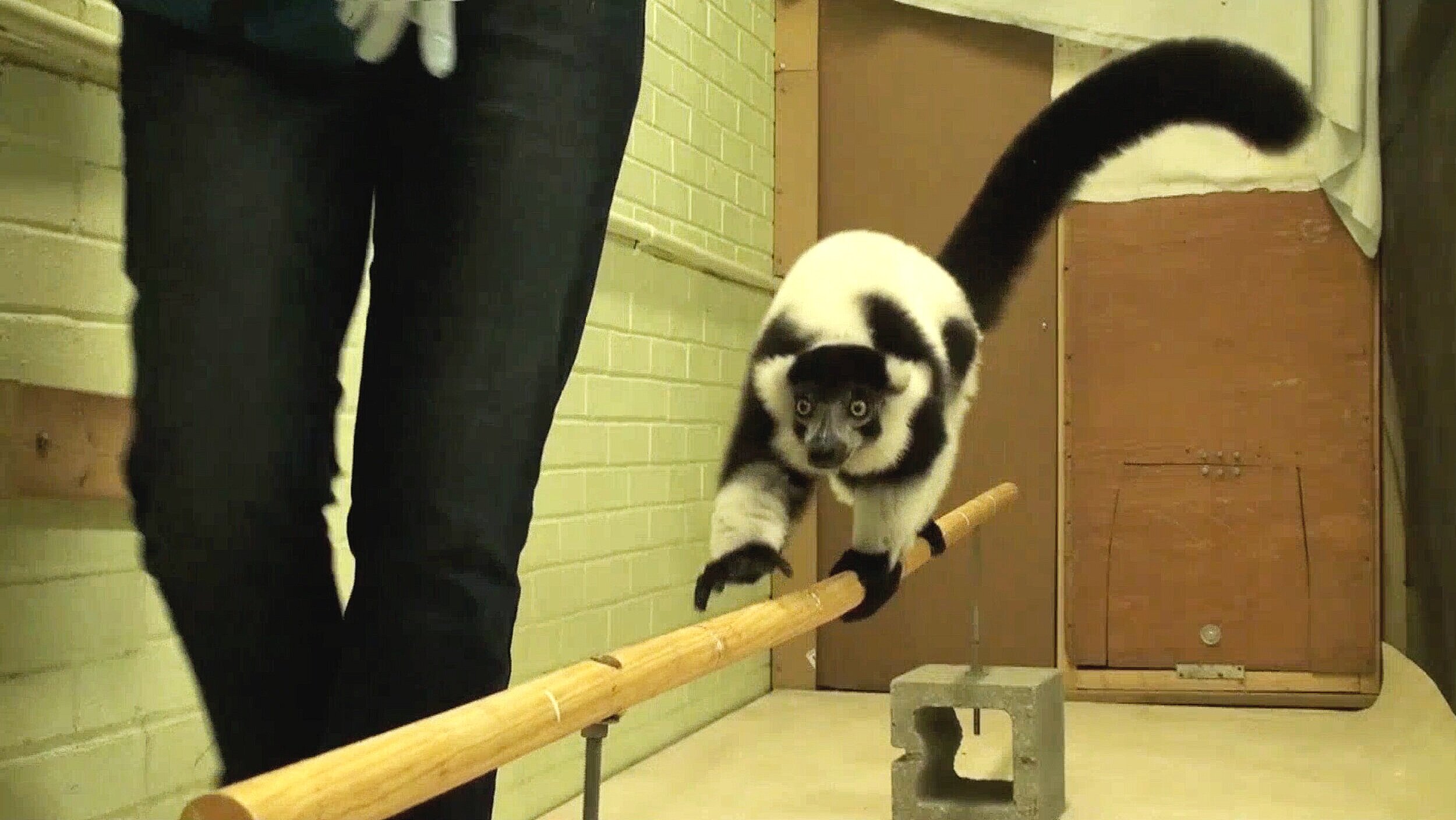Energetics of terrestrial bipedal locomotion in sifaka
Human terrestrial bipedalism is unique among mammals has significantly influenced the form and function of our locomotor anatomy. Similar to early hominins, sifaka are predominately arboreal but locomote bipedally when terrestrial. In collaboration with Drs. Amanda McGrosky, Roshna Wunderlich, Becca Lewis, Angel Zeininger, and Dan Schmitt, we are investigating the energetic consequences of terrestrial locomotion in a predominately arboreal primate both in the lab and in the field.
Locomotor Biomechanics of the Axial Skeleton
Head stability during locomotion allows primates to navigate their complex, often arboreal environments. The goal of this research is to understand how the neck functions to maintain head stability during locomotion and how the function of the spine varies among locomotor modes and conditions. Several lab-based studies have been conducted at the Duke Lemur Center in collaboration with Drs. Dan Schmitt and Angel Zeininger, and at Osaka University in collaboration with Drs. Yoshihiko Nakano, Ryosuke Goto, and Tetsuya Shitara.
Form and Function of the Primate Cervical Spine
The neck has a myriad of functions: it stabilizes the head during locomotion, moves the head independent of the trunk, and anchors the pectoral girdle. In collaboration with Drs. Faye McGechie and Thierra Nalley, this research aims to understand musckuloskeletal morphology of the spine through in vivo measures of function. Once established, these form-function relationships can be applied to fossil specimens to further our understanding of primate evolution.
Head-Neck Functional Morphology in Bats
This research explores the biological role of the head and neck in Neotropical bats and its functional influence on craniovertebral form in collaboration with Dr. Andrea Rummel at the field site of Drs. Brock Fenton and Nancy Simmons in Lamanai, Belize.



